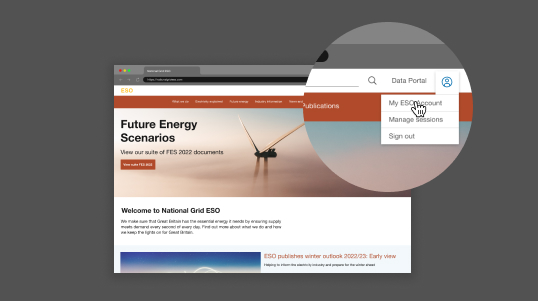
The actions we’re taking to manage reduced demand for electricity this summer
7 May 2020 - 5 minute read
Our Chief Engineer and Head of National Control Roisin Quinn sets out the additional steps that we’re taking to ensure we have all the tools available to manage security of supply over the summer months.
As we’ve previously written in our Summer Outlook report, coronavirus has had a significant impact on demand for electricity. You might think people staying at home and using more electricity would mean an increased overall demand across the country, but that’s not the case. Electricity demand is actually significantly lower than usual, due to a decrease in energy use from commercial and industrial consumers.
It’s the role of our control room to keep supply and demand for electricity in balance, and the tools and processes our control room currently has in place to do this mean Great Britain’s system is one of the most reliable in the world. But we can’t be complacent, and as a prudent system operator we’ve been working with industry to explore additional options to help us to manage the unprecedented situation caused by COVID-19 and reduced demand for electricity.
Our new tools and processes are there to make sure electricity supply on the transmission and distribution networks can be managed effectively, allowing our control room to maintain stability in any situation.
Over the past week we’ve put in place three new tools and processes for our control room to draw upon, and give them additional support over the summer period. These primarily focus on ensuring that electricity supply on the transmission and distribution networks can be managed effectively, allowing our control room to maintain stability on the transmission network in any situation, including those currently beyond our forecasted summer scenarios.
Contracting power stations to reduce output
As part of a series of additional tools to address reduced demand they have agreed a one off, fixed term contract with EDF to reduce output from Sizewell B nuclear power station, as opposed to daily payments to reduce output via the Balancing Market. The agreement, which will run in parallel to the ESO’s existing balancing of all forms of electricity generation, is a more cost efficient and secure outcome for consumers. It also gives additional options to the ESO’s control room engineers to manage the key properties of the electricity system such as stability, frequency and voltage.
A new marketplace for smaller generators
Another of the temporary solutions that we’re putting in place is the Optional Downward Flexibility Management (ODFM) product, a new voluntary service for small scale renewable generators to receive payments from the ESO, if we ask them to turn down or turn off their generation of electricity. This service will give our control room additional options to manage the transmission network, by reducing the amount of electricity supplied at the local, distribution network level. By doing this we will be able to maintain the transmission network, which is vital to ensuring that electricity generated at one end of the country can safely and reliably supply electricity demand where it is needed most, no matter the distance.
Clarifying roles and responsibilities
Not all electricity generators are connected to the high power/high voltage transmission network, some are instead connected at the local level as they are smaller than traditional nuclear, coal and gas power stations. To ensure that we the ESO can continue to run the transmission network in low demand periods, we need the ability to manage these smaller scale generators, such as small solar and wind farms so that generation can continue to operate on both the local and national network.
Our ability to be able to instruct these generators to reduce their output has always been in place in the Grid Code (the technical and legal framework that helps govern how electricity is created), but given the unprecedented situation posed by lower demand we have raised this again with via industry via a modification to the grid code, to make sure everyone is clear on the roles and responsibilities.This process would only be deployed in the unlikely event of an emergency situation and is there to help ensure that, even in such cases, we maintain supply of electricity.
What this means for future system operation
For the last several years, as Great Britain has been on a course of rapid decarbonisation, we have been analysing the challenges of a renewables based electricity system. Our analysis has shown that there are significant operational challenges, driven by the intermittency of renewables, and the shift from transmission to distribution connected generation – the operational conditions we see under lockdown replicate these conditions.
We have been developing robust plans to ensure the system is secure when the energy transformation is complete; and last year, we set ourselves the challenge of being able to operate the electricity system carbon free by 2025. Our innovation projects, and practical trials, are demonstrating that the system will be safe and secure when fully decarbonised.
The decisions we have taken over the last month are not indicative of the future. We have been planning for operational conditions like those we see at the moment for several years – however, the lockdown has temporarily accelerated these conditions by several years. Our roadmap to 2025 sets out how we will ensure that these problems are solved in the future – by 2025 we will have the tools, products, and services in place that remove the need for temporary measures such as those outlined above.
